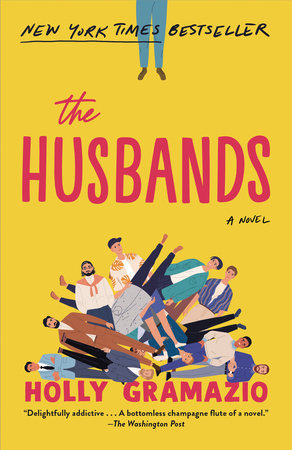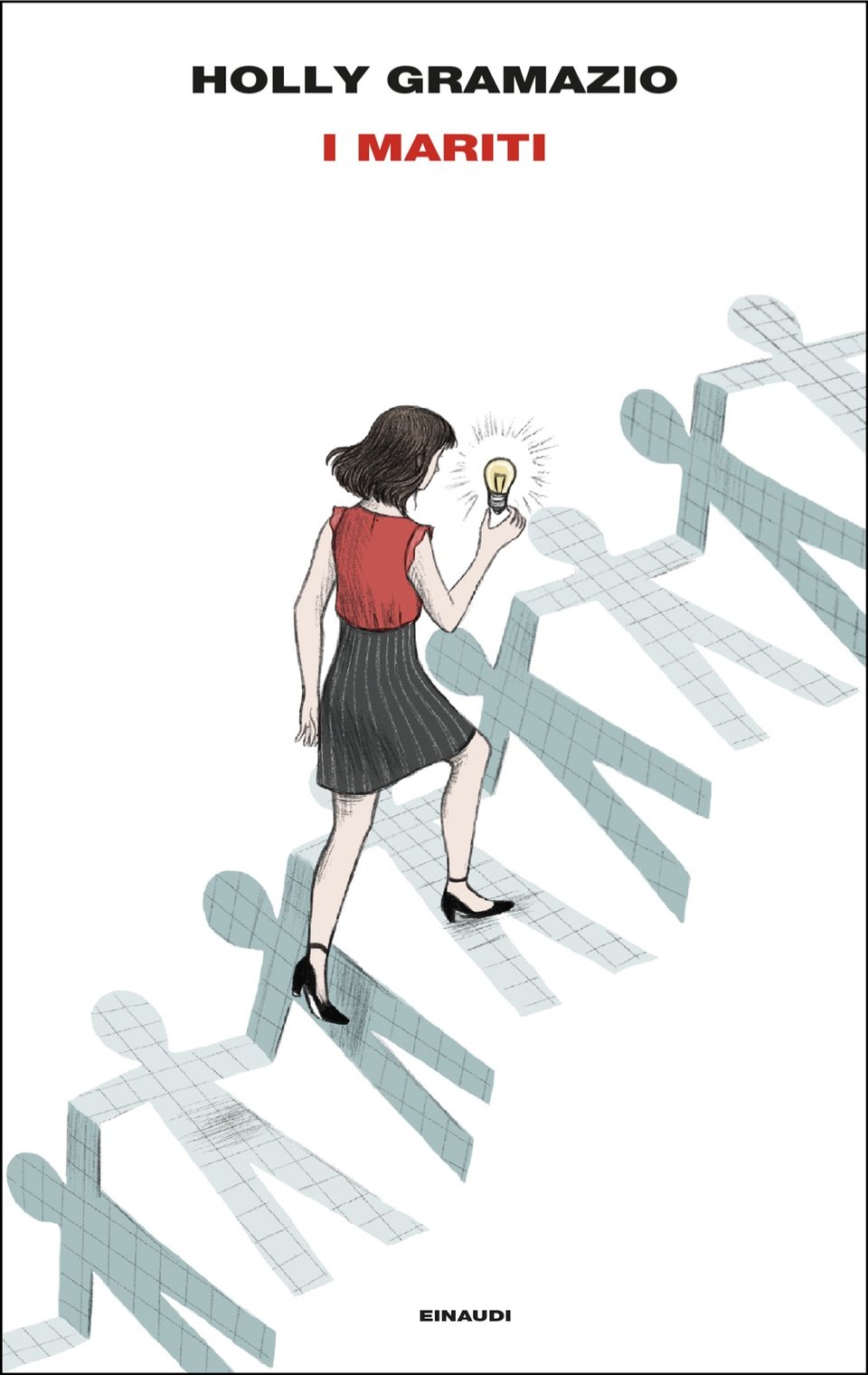US Husbands paperback + "the original ending(s)"
Heya,
The US paperback of The Husbands is out TODAY and it’s got a new lovely cover:

To celebrate I thought I might spend this week’s newsletter answering the single question about the book that I’m asked most often, which is:
Your acknowledgements section says that an earlier version of the book had three endings. What were they? Are you ever going to put them online?
Okay. So. I had no idea so many people habitually read the acknowledgements section of books. Mine does say that an earlier version of the book had three endings.
But that’s actually an oversimplification.
First things first: in terms of intent, my ending never changed. There was always a particular emotional thing I was trying to do with it. It’s just the specific events, the way I thought I could get at that emotion, that changed.
That said, though: the very first version of the book had eight endings. I’m trying to write this without spoilers while still being as direct as possible, but basically: my main character, Lauren, struggles with making decisions. And at one point, quite early on, I thought: you know what, maybe it’d be fun if at the end of the book she still can’t quite make a decision for herself the normal way, so instead she just… writes down all the things she can think of to do, and rolls a dice to pick between them. Or, actually — because she’s not really a “casually carries a dice in her pocket at all times” girl — maybe she flips a coin a few times. Three flips gives you eight possible outcomes: tails tails tails, heads heads heads, heads tails heads, and so on.
So I wrote eight endings — honestly, it was a struggle to think of that many but two coinflips/four endings didn’t seem like enough so I stuck with it and forced them out. And I made Lauren flip a coin three times, and I titled the endings after the possible results of the coin flip, TTT, TTH and so on. And I thought: this is great, it acts as an implicit invitation to the reader to flip their own coins to pick the ending that’s true for THEM, I am basically Italo Calvino.
And then three days later, long before I’d shown any of this to anyone, I thought: oh wait, no, this is obviously terrible.
Eight endings is a lot, too, and so some of them were pretty weird. One where Lauren decides to cycle husbands non-stop until a particular husband comes back; we leave her two days and many thousands of husbands into the frenzy. One ending with a dead husband who Lauren hauls up into the attic only to find the new-husband magic doesn’t work on a body. One where Lauren goes to ask her grandmother about the whole magic attic situation, and her grandmother says, essentially, “oh shit, is the attic magic for you too, hmmm that’s inconvenient” and then locks Lauren outside and asks her husband, Lauren’s grandfather, to check something in the attic. In retrospect, it was more like a brainstorming process than an actual end-of-a-book.
But for some reason instead of thinking “I’ve realised eight endings is bad, so maybe I should write one ending, as is traditional” I decided the fundamental problem wasn’t the concept but just the excess. Eight endings: bad. Three: good, probably? And that’s when I wrote the three-ending version: three vaguely rational things Lauren could think of to do, and she picked between them by plucking petals from a daisy. Right, I thought. Job done.
After that I did a bunch of editing and rewriting and eventually sent the book off to my agent, Veronique Baxter, who got back to me and said: yeah this seems good but I think you need a better ending.
To which I said “sure!” and “makes sense!” and then spent about a month stomping around the house muttering things like if I could have THOUGHT of a better ending I would have WRITTEN a better ending in the FIRST place. But also thinking: uggggh she’s RIGHT though. Because multiple endings kind-of felt like hedging my bets, and pulled against what I was actually trying to do.
So after the stomping and after talking to a bunch of friends, I went back to the original chaotic eight-ending brainstorm draft, and found one little underwritten idea in there, half a page long, pushed out near the end of the “okay now I have to think of eight whole endings” process. And there it was! The ending I wanted, hidden among the other seven. So I reworked it and expanded it and built it up and made it the one single ending that the book has now.
I’m not gonna put any of the other endings online because they’re genuinely not very interesting, and also because I am by nature a scrappy disordered drafter who loves to edit; I go over everything I write so many times before it’s fit for wider reading. (Like, even for this casual little newsletter, I’m four or five drafts in at the time of writing this sentence.) So the earlier endings are just not really fit for human consumption.
But at least now I have an explanation I can point at if people ask me about them!
BRIEF NOTES ON OTHER EDITIONS
The Italian version of the book is out!! It’s from Einaudi and it has that extremely classic Einaudi-cover font, which is very exciting to me:

And the UK paperback is out on Thursday 27 March - I’m doing a few events for that which I’ll announce properly soon, but the first one is ON RELEASE DAY at the lovely Phlox in Leyton, with Lauren Bravo, talking about my book and about Lauren’s wonderful Probably Nothing, which is also just out in paperback. You should come!
PLUS: THINGS I’VE ENJOYED LATELY
Right, I’ve been in Australia for the last few weeks and travelling around a bunch so I’ve enjoyed a lot of things, most of which don’t really lend themselves to a writeup (eg “sunlight”, “casually delicious food”). But here’s a few highlights:
I saw a bunch of good shows at the Adelaide Fringe, but 10,000 Hours by Gravity and Other Myths was probably my favourite. It’s basically a bunch of tumblers performing for an hour, and it’s about the process of gaining physical skills, practicing, collaborating, trying, failing. Drilling certain movements over and over again. It’s so good, and it also works brilliantly as a way to communicate the huge difficulty of some of the acrobatic feats, building up to them through loops of smaller-scale versions. I was a bit worried that a show about gaining physical skills was going to make me feel bad about myself, since I have none, beyond “I’m quite good at the videogame Beat Saber”. But it didn’t at all, it was such a joy.
I also really enjoyed Mel McGlensey’s Motorboat and Bruno Dubosarsky and Daniel Scarratt’s Karate-Man. Weirdly, these two shows kind-of had the same ending: they both feature main characters who are partly controlled by audience interactions, and the main characters (spoilers) find their respective happy endings by (Karate-Man) grabbing the controls or (Motorboat) uhh motorboating herself, look I promise it makes sense in context. Also both of them were really thoughtfully done in allowing audience interactions to feel powerful and significant and funny but also totally optional.
I’ve been enjoying Sally Olds’ essay collection People Who Lunch about different Melbourne subcultures. Particularly fun to read while in Melbourne, obviously. For some reason the Australian edition opens with her essay on a local branch of the fraternal organisation Royal Antediluvian Order of Buffaloes, and the international version has reordered things to start off with her essay on polyamorists. (Both versions tuck the essay on crypto enthusiasts safely at the end.)
ACMI, the Australian Centre for the Moving Image, is SO good. The permanent collection has had a complete rejig since I last visited, and it’s wonderful. There’s a prehistory of film filled with zoetropes and shadow puppets and cool objects and interesting details, way more than just a gesture to the more distant past. There’s so many thoughtful and well-presented displays on videogames that are integrated into the whole and contextualised beautifully. There’s a whole bunch of interactive exhibits that are simple and functional and that just work: home videos that you watch by cupping your hands beneath a projector and the video runs, tiny, in your palm; clips from movies that you can reorder into unlikely montages by moving big word blocks around on a long table; an invitation to make foley effects, trying to time them to (for example) twenty stressful seconds of Bronson being chased by an eagle in Round The Twist. Annoyingly I just missed their Untitled Goose Game exhibition, curated by Jini Maxwell (but Adrian Hon’s bluesky thread on it is lovely).
ANYTHING ELSE?
Tickets for this year’s Now Play This festival are now on sale, 11-12 April in Somerset House!
Plus I was on a couple of podcasts recently that were great fun:
So I Wrote A Book… Now What? with NC Barton
The Spark with Madelyn Postman
and otherwise I think that’s it for now!
Best,
Holly